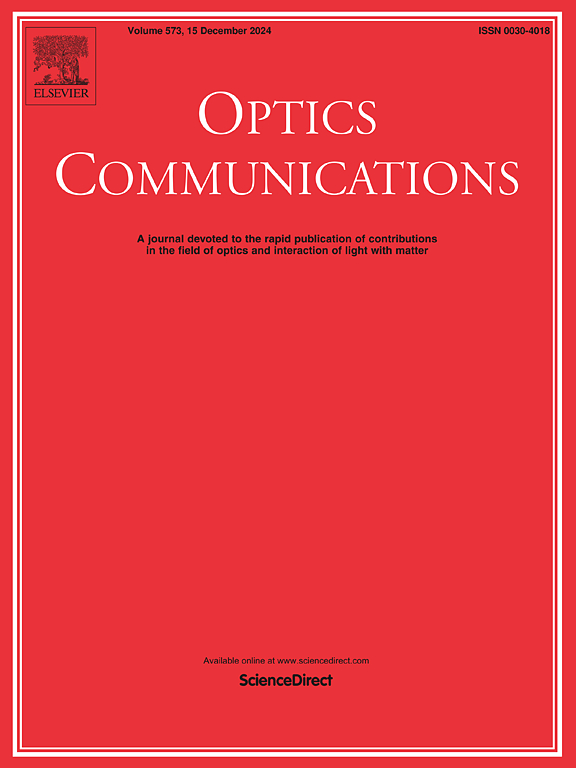基于JIQ-NOMA的多用户VLC系统混合三维功率分配
IF 2.5
3区 物理与天体物理
Q2 OPTICS
引用次数: 0
摘要
可见光通信(VLC)是一种新兴的高速、短距离无线通信技术。在多用户VLC系统中,用户之间的功率分配是影响系统性能的关键问题,特别是在信道条件变化的情况下。提出了一种新的基于联合同相和正交非正交多址(JIQ-NOMA)的多用户VLC系统三维功率分配(3DPA)方案。提出的3DPA方案旨在VLC系统中不同用户组之间有效分配功率,从而提高系统整体性能并提高公平性,特别是在具有不同信道条件的光通信系统中。仿真结果验证了所提出3DPA方案的有效性,在误码率(BER)为3.8×10−3的情况下,与基准方案相比,传输信噪比(SNR)显著降低1.8 dB。在此目标误码率下,传输距离比基准方案提高14.1%。本文章由计算机程序翻译,如有差异,请以英文原文为准。
Hybrid three-dimensional power allocation for JIQ-NOMA based multi-user VLC systems
Visible light communication (VLC) is an emerging technology for high-speed, short-range wireless communication. Power allocation among users in multi-user VLC systems is a critical issue that affects the system performance, particularly in the presence of varying channel conditions. In this paper, a novel three-dimensional power allocation (3DPA) scheme is proposed for joint in-phase and quadrature non-orthogonal multiple access (JIQ-NOMA) based multi-user VLC systems. The proposed 3DPA scheme aims to allocate power effectively among different user groups in VLC systems, thereby enhancing the overall system performance and improving fairness, particularly in light-based communication systems with varying channel conditions. Simulation results validate the effectiveness of the proposed 3DPA scheme, demonstrating a significant reduction of 1.8 dB in the transmitted signal-to-noise ratio (SNR) at a bit error rate (BER) of , compared to the benchmark scheme. Furthermore, the transmission distance at this target BER can be increased by 14.1% relative to the benchmark scheme.
求助全文
通过发布文献求助,成功后即可免费获取论文全文。
去求助
来源期刊

Optics Communications
物理-光学
CiteScore
5.10
自引率
8.30%
发文量
681
审稿时长
38 days
期刊介绍:
Optics Communications invites original and timely contributions containing new results in various fields of optics and photonics. The journal considers theoretical and experimental research in areas ranging from the fundamental properties of light to technological applications. Topics covered include classical and quantum optics, optical physics and light-matter interactions, lasers, imaging, guided-wave optics and optical information processing. Manuscripts should offer clear evidence of novelty and significance. Papers concentrating on mathematical and computational issues, with limited connection to optics, are not suitable for publication in the Journal. Similarly, small technical advances, or papers concerned only with engineering applications or issues of materials science fall outside the journal scope.
 求助内容:
求助内容: 应助结果提醒方式:
应助结果提醒方式:


